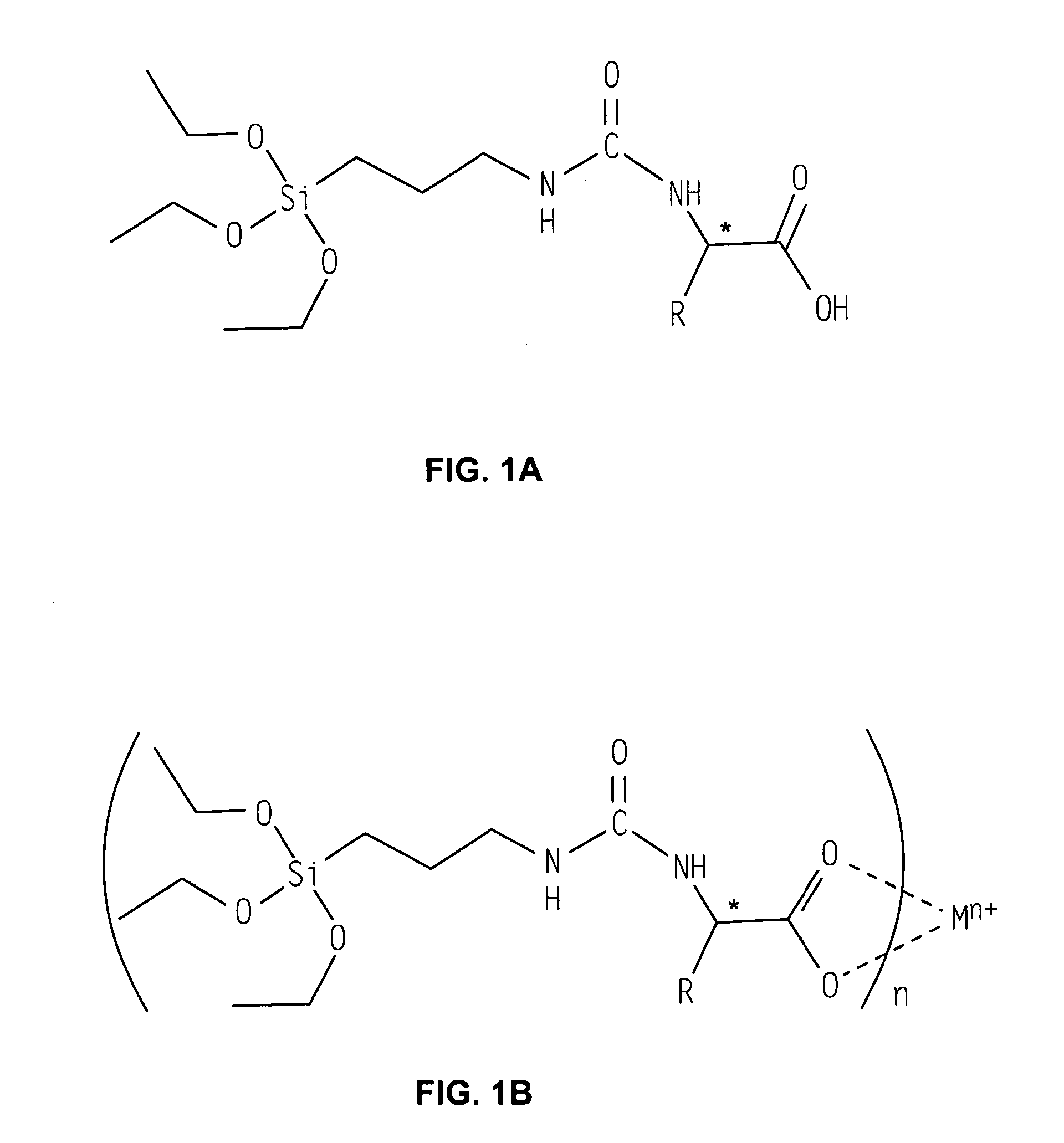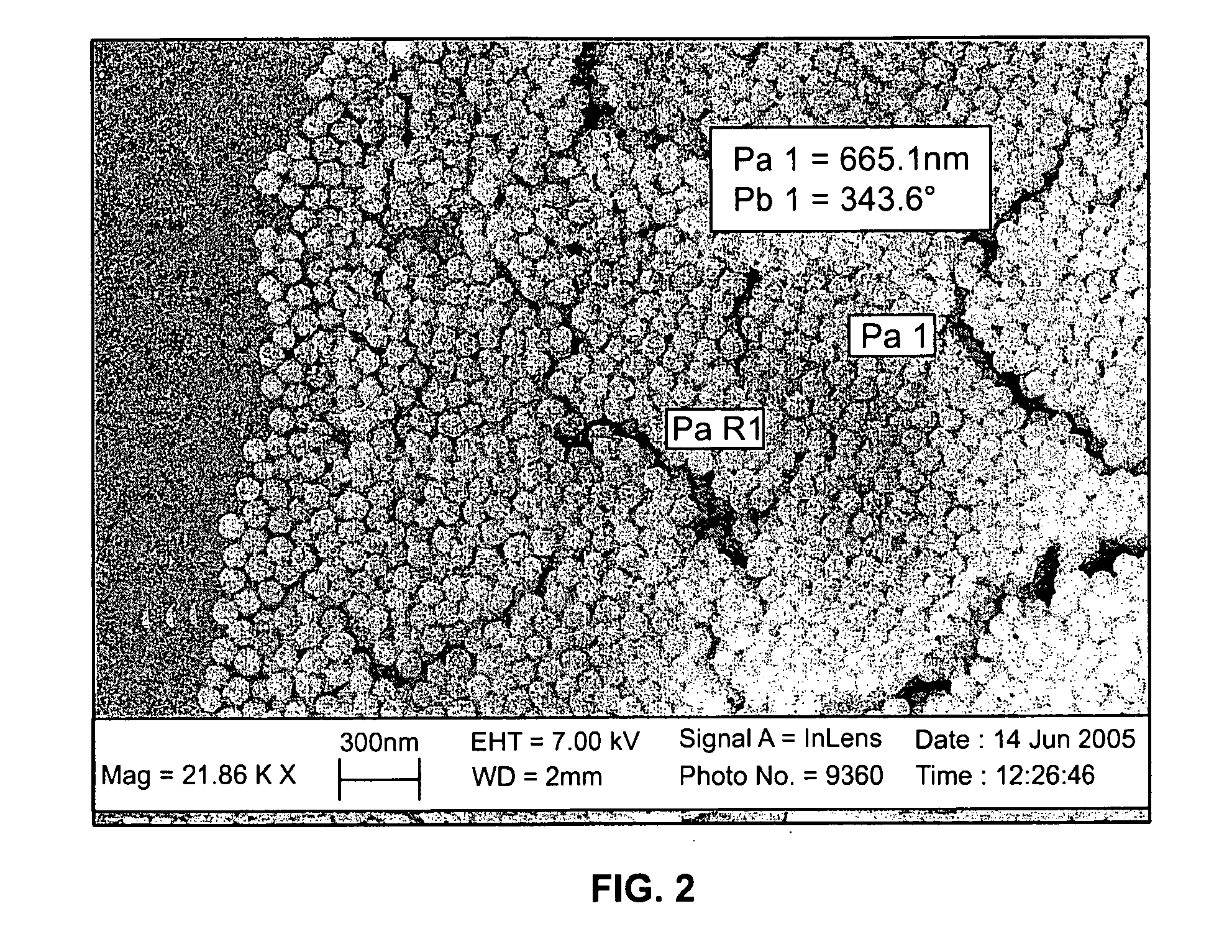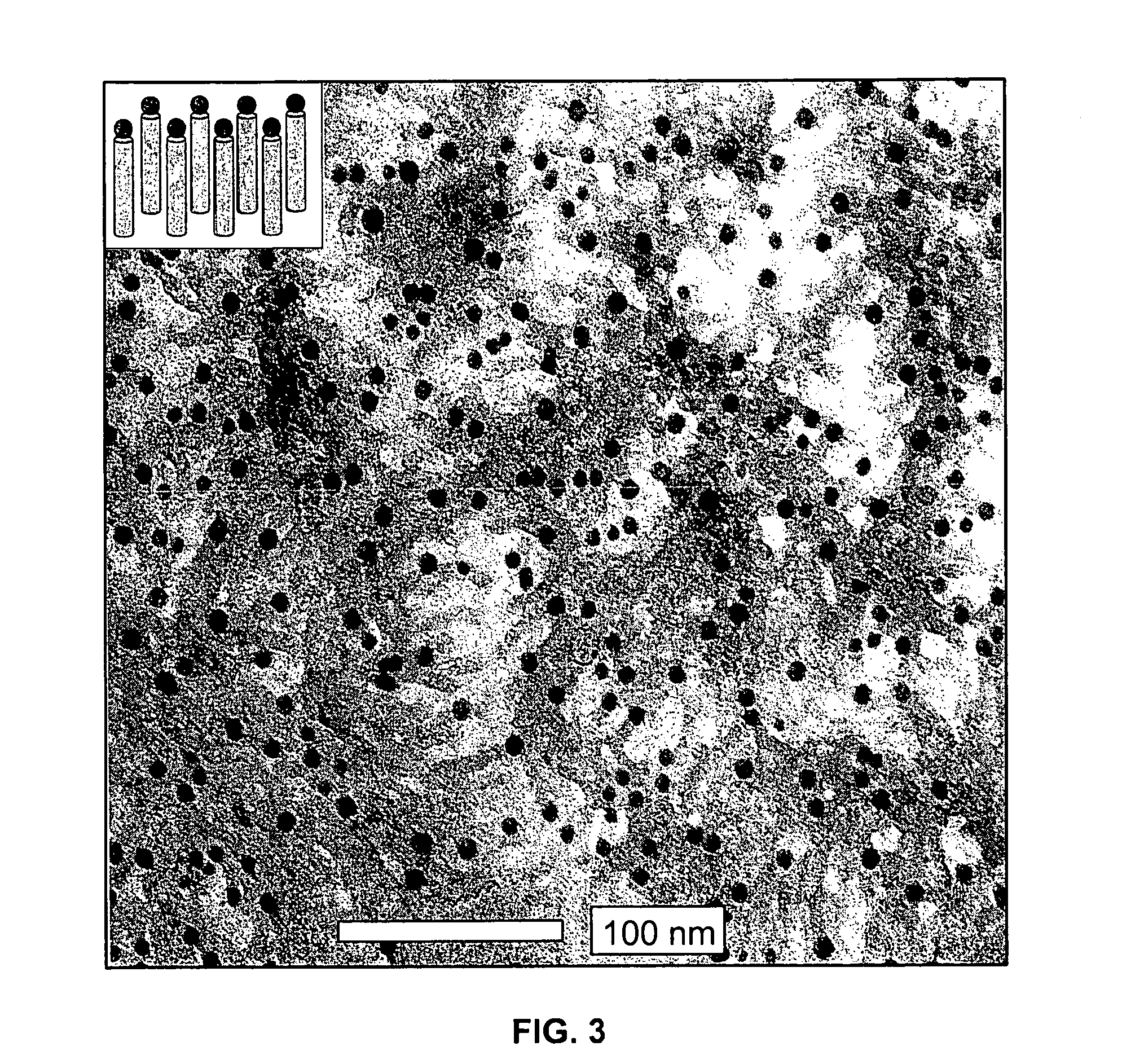Sol-Gel Precursors and Products Thereof
a technology of precursors and gels, applied in the field ofsolgel precursors, can solve the problems of limited monolithic architecture, difficult to achieve similar hydrolysis and condensation rates, and loading of functional species
- Summary
- Abstract
- Description
- Claims
- Application Information
AI Technical Summary
Benefits of technology
Problems solved by technology
Method used
Image
Examples
example 1 (
c)
Peptide-Based Precursor Synthesis
[0061]In a typical synthesis, equimolar amounts of ICPTS and the peptide were combined. For example, 0.15 mmol of ICPTS and 0.15 mmol of DiProtin-A (a peptide with a Leu-Pro-Leu sequence) were combined in 35 mL of anhydrous DMF. Subsequent addition of an amount of metal acetate ([0.15 (1−0.15)] / n mol, where “n” is the oxidation state of the metal and assuming an 85% yield), was added, and subsequent distillation of the acetic acid and DMF under high vacuum at 50° C. afforded the viscous product.
Example 2(a)
Monolith Formation
[0062]Typically, 0.3 g of the metal-precursor complex was dissolved in 2 g of anhydrous THF. After stirring for a few minutes to ensure complete dissolution, pH 9.0 H2O (10−6 M NaOH) was added to initiate hydrolysis and condensation. To ensure complete hydrolysis, a 1:1 molar ratio between alkoxide and water was maintained. After stirring 10 minutes, the film was then cast at 50° C. in an aluminum dish. The dish was covered by a...
example 2 (
Example 2(f)
Stöber-Type Particle Formation
[0067]A varying amount of metal-universal ligand complex (0-60 mg) was combined with 1.1 mL of TEOS and 5.0 mL of ethanol. A second solution containing 20 mL of 2.0 M NH3 in ethanol, 5.85 mL of water, and 68 mL of ethanol was prepared. The first solution was added to the second, and the solutions were stirred for 12 hours. After this time, 2.675 mL of TEOS was added to the reaction over 10 minutes. Stirring continued for 24 hours, after which the point the particles were isolated from the solvent. These particles could be calcined by heating to 550° C. in air. Any amino acid, peptide, hydroxy acids may be used in the generation of such particles, preferably a hydroxy acid, and most preferably a small hydroxy acid, for example, lactic acid.
example 3
Some Successful Combinations of Amino Acids and Metals Used to Create the Universal Ligand
[0068]
TABLE 1Carboxylic acidMetalsCommentsL-(+)-isoleucineAg (Ag2tfa2), Bi,Exhibits high solubility. ProductCo, Cr, Cu, Er, Eu,is glassy or is extremely viscous.Gd, In, Mg, Mn,Used silver trifluoroacetateNi, Pb, Pd, Ptinstead of silver acetate as silver(Pt4ac8), Sr, Y, Znsource.γ-amino butyric acidMo (Mo2ac4), RhDimeric metal acetates need less(Rh2ac4)sterically demanding ligands toensure complete ligand exchange.DL-2-aminobutyric acidCu, GdL-(+)-phenylalanineZnL-(+)-α-phenylglycineZn6-aminohexanoic acidPbExhibits low solubility.L-valineCu, ZnDL-β-leucineCuDiprotinA (Ile-Pro-Ile)GdL-(+)-lactic acidCu, Zn2-hydroxy-3-methylbutyricCo, Cu, Znacid(R)-2-hydroxybutyric acidZn(S)-2-hydroxybutyric acidZn2,2-dimethyl-3-Mo (Mo2ac4), ZnProduct is Mo2ac1U3, ashydroxypropionic aciddetermined by NMR.L-(+)-mandelic acidCu, Zn
[0069]FIG. 7, for example, shows a cobalt-universal ligand complex in which L-isoleuci...
PUM
| Property | Measurement | Unit |
|---|---|---|
| Fraction | aaaaa | aaaaa |
| Fraction | aaaaa | aaaaa |
| Fraction | aaaaa | aaaaa |
Abstract
Description
Claims
Application Information
 Login to View More
Login to View More - R&D
- Intellectual Property
- Life Sciences
- Materials
- Tech Scout
- Unparalleled Data Quality
- Higher Quality Content
- 60% Fewer Hallucinations
Browse by: Latest US Patents, China's latest patents, Technical Efficacy Thesaurus, Application Domain, Technology Topic, Popular Technical Reports.
© 2025 PatSnap. All rights reserved.Legal|Privacy policy|Modern Slavery Act Transparency Statement|Sitemap|About US| Contact US: help@patsnap.com



